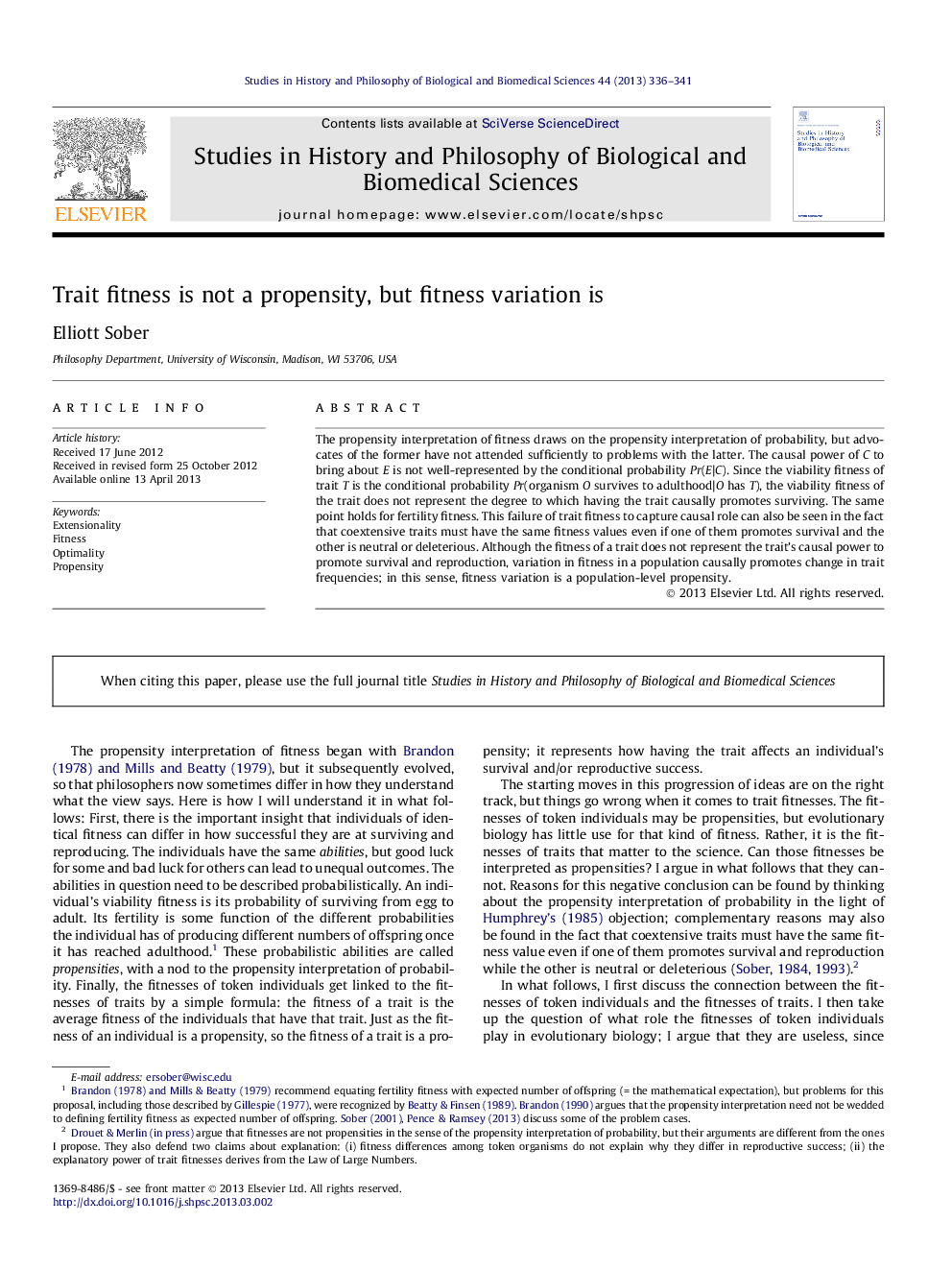| کد مقاله | کد نشریه | سال انتشار | مقاله انگلیسی | نسخه تمام متن |
|---|---|---|---|---|
| 1161762 | 1490525 | 2013 | 6 صفحه PDF | دانلود رایگان |

• Propensity interpretations of fitness and probability are connected.
• Fitnesses of token organisms are useless quantities; what matters are trait fitnesses.
• Optimality models are about trait fitnesses, not the fitnesses of token organisms.
• The power of C to bring about E is not well-represented by the probability Pr(E|C).
• Variation in fitness in a population causally promotes change in trait frequencies.
The propensity interpretation of fitness draws on the propensity interpretation of probability, but advocates of the former have not attended sufficiently to problems with the latter. The causal power of C to bring about E is not well-represented by the conditional probability Pr(E|C). Since the viability fitness of trait T is the conditional probability Pr(organism O survives to adulthood|O has T), the viability fitness of the trait does not represent the degree to which having the trait causally promotes surviving. The same point holds for fertility fitness. This failure of trait fitness to capture causal role can also be seen in the fact that coextensive traits must have the same fitness values even if one of them promotes survival and the other is neutral or deleterious. Although the fitness of a trait does not represent the trait’s causal power to promote survival and reproduction, variation in fitness in a population causally promotes change in trait frequencies; in this sense, fitness variation is a population-level propensity.
Journal: Studies in History and Philosophy of Science Part C: Studies in History and Philosophy of Biological and Biomedical Sciences - Volume 44, Issue 3, September 2013, Pages 336–341